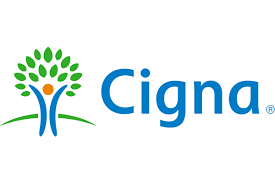Please note we may not offer this service. Call (253) 761-5422 for more information.
Achieve the Smile You Deserve with Pocket Reduction Surgery
If you’re dealing with severe gum disease, an innovative treatment known as pocket reduction surgery might be the solution. This procedure effectively removes harmful bacteria and damaged tissue from the pockets surrounding your teeth, decreasing their depth and preventing further damage.
Our Tacoma, WA, dentist explains how this surgery is performed and at which stage of gum disease it may be recommended. Should you have any questions, feel free to contact our Tacoma dental office at (253) 761-5422.

What Is Pocket Reduction Surgery?
Pocket reduction surgery, also known as flap surgery or osseous surgery, is a dental procedure designed to treat advanced periodontal disease. It works by removing bacteria trapped in the pockets around your teeth. These pockets form when plaque and tartar get stuck under the gums or when gums pull away from the teeth. If left untreated, the bacteria can harm surrounding bone and eventually lead to tooth loss.
During flap surgery, a skilled periodontist makes small cuts in the gum tissue to create a flap. This allows them to clean out bacteria and tartar buildup before stitching the flap back in place.
How Pocket Reduction Works
The process starts with a thorough examination and cleaning of your teeth and gums. Your periodontist will use dental X-rays and other tools to check the damage caused by periodontal disease. If it’s severe, pocket reduction surgery may be recommended.
Before the procedure, your dental professional will numb your mouth with a local anesthetic to ensure comfort during the surgery. Once numb, they’ll make cuts in the gum tissue to create a flap, which is lifted to expose the tooth roots and surrounding bone.
They’ll then use special tools to clean out bacteria and tartar from the area and periodontal pockets. The roots of the teeth are also cleaned to remove any bacterial buildup. After cleaning, the periodontist will stitch the flap back into place.

Benefits of Pocket Reduction Surgery
Pocket reduction surgery offers numerous advantages, including:
- Decreases Pocket Depth: By minimizing the depths of pockets between the teeth and gums, osseous surgery effectively eliminates the source of infection.
- Prevents Additional Damage: Periodontal disease can harm teeth and their supporting structures. Pocket reduction surgery helps avert further damage and preserves the teeth.
- Boosts Oral Health: By addressing the root of the infection, pocket reduction surgery enhances overall oral health.
- Improves Appearance: This surgery can enhance the aesthetic of the gums and teeth by reducing swelling and inflammation.
Associated Costs of Pocket Reduction Surgery
The cost of pocket reduction surgery can vary based on several factors, such as where you live, the dentist or periodontist performing it, how complex the case is, and how much treatment is needed.
Typically, osseous surgery costs range from a few hundred to several thousand dollars per quadrant (one-fourth of the mouth). This price often includes surgical procedures, local anesthesia, dental sedation (if needed), post-operative care, and follow-up visits.
Keep in mind that this is just an estimate, and actual costs can differ widely. Also, dental insurance might cover some of the costs, affecting your out-of-pocket expenses. It’s best to talk to a dentist or periodontist for a more precise cost estimate based on your specific situation and location.
Frequently Asked Questions
Is pocket reduction surgery painful?
During pocket reduction surgery, a local anesthetic is used to numb the area, minimizing discomfort. Patients might feel some pressure or vibration, but pain isn’t typical. After the procedure, mild discomfort can occur, but over-the-counter pain relievers usually help manage it.
How long does it take to recover from osseous surgery?
Recovery from osseous surgery varies based on the severity of periodontal disease and the extent of the surgery. Most patients resume normal activities within a few days, but full recovery might take one to two weeks.
During recovery, avoid hard or crunchy foods and follow your dentist’s instructions. This might include using a special mouthwash or following a specific oral hygiene routine.
How can I prevent periodontal disease from recurring after surgery?
Good oral hygiene is crucial to prevent periodontal disease from returning after pocket reduction surgery. Brush twice a day, floss daily, and use mouthwash regularly.
Your dentist might suggest additional treatments like antibiotics or antimicrobial mouthwash. Regular dental checkups and cleanings are also vital for monitoring gum health and preventing future gum disease.
Is pocket reduction surgery covered by insurance?
Many dental insurance plans cover pocket reduction surgery if it’s medically necessary for gum disease. Check with your insurance provider to understand your coverage and any out-of-pocket costs.
Your dentist’s office can assist with insurance to determine coverage and help navigate the process. If insurance doesn’t cover the procedure or you lack insurance, your dentist may offer payment plans or financing options to make it more affordable.
Refresh Your Smile and Alleviate Gum Disease Symptoms
Are you fed up with the discomfort and embarrassment caused by gum pockets around your teeth? It’s time to make a change. Pocket reduction surgery can restore your confidence and enhance your oral health.
Begin your journey to a brighter, healthier smile by contacting our Tacoma dental office today at (253) 761-5422. Our team of seasoned professionals is here to guide you through the process and address any questions you might have. We’re proud to serve patients in Tacoma, Lakewood, Puyallup, Federal Way, Gig Harbor, and University Place.





















